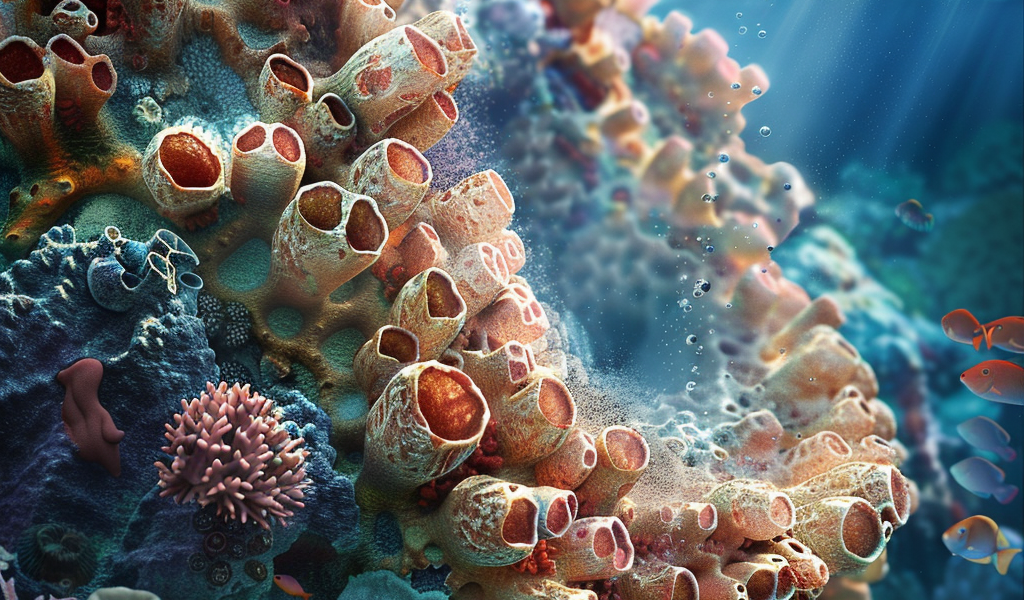Marine Sponge Microbe Sheds Light on Tuberculosis Evolution
Recent research has unveiled a fascinating discovery in the realm of infectious diseases. A bacterium found in a marine sponge from the Great Barrier Reef has been identified as having striking similarities to Mycobacterium tuberculosis, the notorious pathogen responsible for tuberculosis (TB). This revelation could pave the way for innovative research and treatment strategies for TB, a disease that continues to pose a significant threat to global health.
Despite being one of the deadliest infectious diseases worldwide, the origins and evolutionary history of M. tuberculosis remain largely enigmatic. The newly identified bacterium, designated as Mycobacterium spongiae, was discovered in a marine sponge collected from the waters near Cooktown, Queensland. Marine sponges are often referred to as ‘chemical factories’ due to their ability to produce a variety of bioactive compounds, which have been found to possess potent anticancer, antibacterial, antiviral, and anti-inflammatory properties.
During a study aimed at exploring the chemical-producing bacteria within a sponge specimen, researchers from the University of Queensland stumbled upon this intriguing bacterium. The specimen was subsequently sent to the Doherty Institute, where a team of scientists undertook comprehensive analyses of the bacterium’s genes, proteins, and lipids. Their findings revealed that M. spongiae shares approximately 80 percent of its genetic material with M. tuberculosis. Notably, this includes several key genes that are associated with the bacterium’s pathogenicity.
Interestingly, the researchers noted a significant distinction between the two bacteria: unlike M. tuberculosis, M. spongiae does not induce disease in mice, indicating its non-virulent nature. Dr. Sacha Pidot, a Laboratory Head at the Doherty Institute and co-lead author of the research paper, expressed excitement over this discovery, stating, “We were astounded to discover that this bacterium is a very close relative of M. tuberculosis.”
Dr. Pidot further elaborated on the implications of this finding, suggesting that it provides valuable insights into the evolutionary trajectory of M. tuberculosis. “This finding suggests that these pathogens may have originated from marine mycobacteria,” he noted.
Professor Tim Stinear, also a Laboratory Head at the Doherty Institute and co-lead author, emphasized the significance of this research in the broader context of understanding tuberculosis. “While there is more work to be done in this space, this discovery is a valuable piece in the puzzle of understanding how TB came to be such a serious disease,” Stinear remarked.
He added that the insights gained from this study could potentially identify vulnerabilities within M. tuberculosis, which may guide the development of new preventative measures, including vaccines aimed at combating tuberculosis.
The research findings were published in the journal PLOS Pathogens, highlighting the collaborative efforts of the Peter Doherty Institute for Infection and Immunity in leading this groundbreaking study. As researchers continue to delve deeper into the genetic and evolutionary aspects of tuberculosis, the hope is that such discoveries will lead to more effective strategies to combat this formidable disease.
The implications of this research extend beyond the laboratory, as the global fight against tuberculosis continues to be a pressing public health challenge. With ongoing investigations into the origins and mechanisms of TB, the scientific community remains optimistic about the potential for new interventions that could save countless lives.
As the understanding of TB evolves, so too does the potential for innovative approaches to tackle this age-old disease. The discovery of M. spongiae serves as a reminder of the untapped resources that nature holds, and the importance of exploring diverse ecosystems in the quest for medical advancements.
In light of these findings, the scientific community is encouraged to continue exploring the connections between marine biology and infectious diseases, as such interdisciplinary research may yield further breakthroughs in our understanding of pathogens and their evolution.





